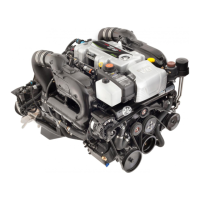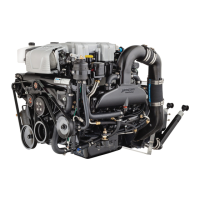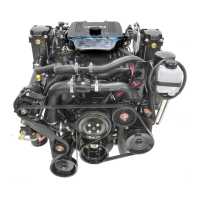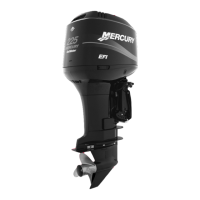STORAGE AND RECOMMISSIONING
SECTION 6
Page 91CMD-4081877 / 90-865861040 MARCH 2004
Cold Weather (Freezing Temperature) Storage
1. Read all precautions and perform all procedures found in Section 5 - Draining The
Seawater System and drain the seawater section of the cooling system.
CAUTION
If boat is in the water, the seacock must remain closed until the engine is to be
re-started to prevent water from flowing back into the cooling system, boat, or both.
If the boat is not fitted with a seacock, the water inlet hose must remain
disconnected and plugged to prevent water from flowing back into the cooling
system, boat, or both.
2. Place a caution tag at the helm advising the operator to unplug and connect the water
inlet hose or open the seacock, if equipped, before operating the boat.
3. For additional assurance against freezing and corrosion fill the seawater cooling system
with a mixture of propylene glycol antifreeze and tap water. Refer to Seasonal Storage
Instructions in this section.
CD665 or CE500 w / changes
0085 w / changes, used diesel information here
Preparing Your Power Package For Seasonal or Extended Storage
CAUTION
Overheating from insufficient cooling water will cause engine and drive damage.
Ensure that there is sufficient water always available at the water inlet holes during
operation.
IMPORTANT: If boat has already been removed from the water, before starting the
engine a source of water must be supplied to the water inlet holes. Follow all
warnings and flushing attachment procedures stated in Section 5 - Flushing The
Seawater System.
1. Supply cooling water to the water inlet holes or seawater pump inlet.
2. Start the engine and operate until it reaches normal operating temperature.
3. Stop the engine.
4. Change the engine oil and filter.
5. Start the engine and run for about 15 minutes. Check for oil leaks.
6. Flush the seawater cooling system. Refer to Section 5 - Flushing The Seawater
System.

